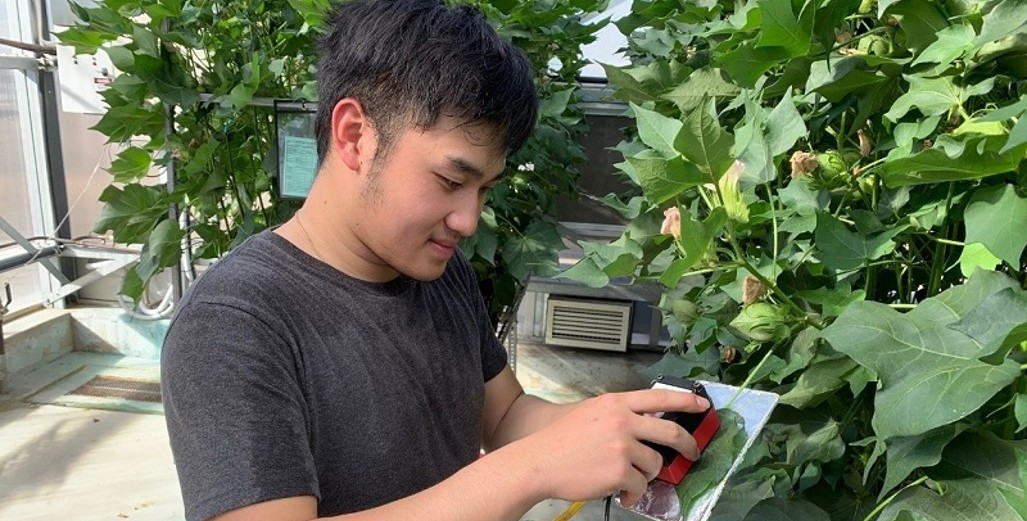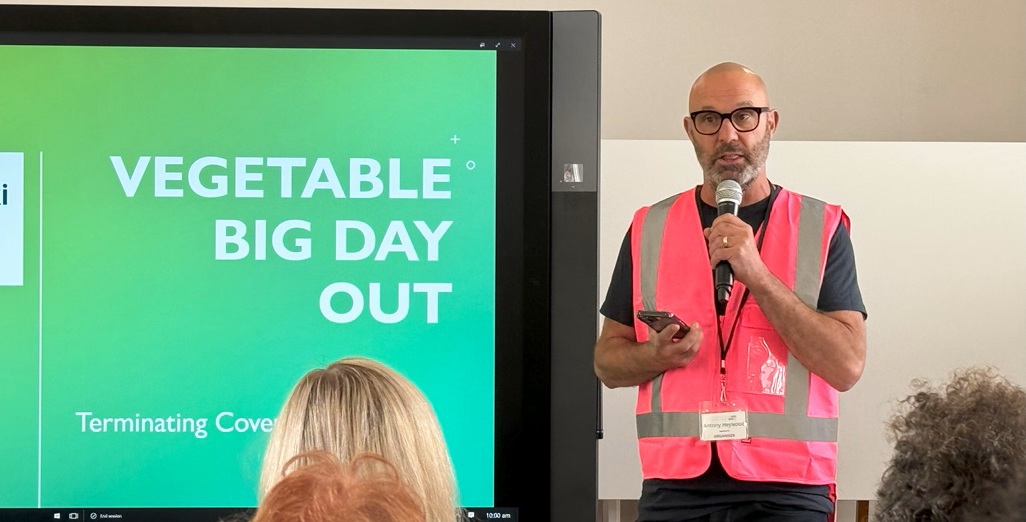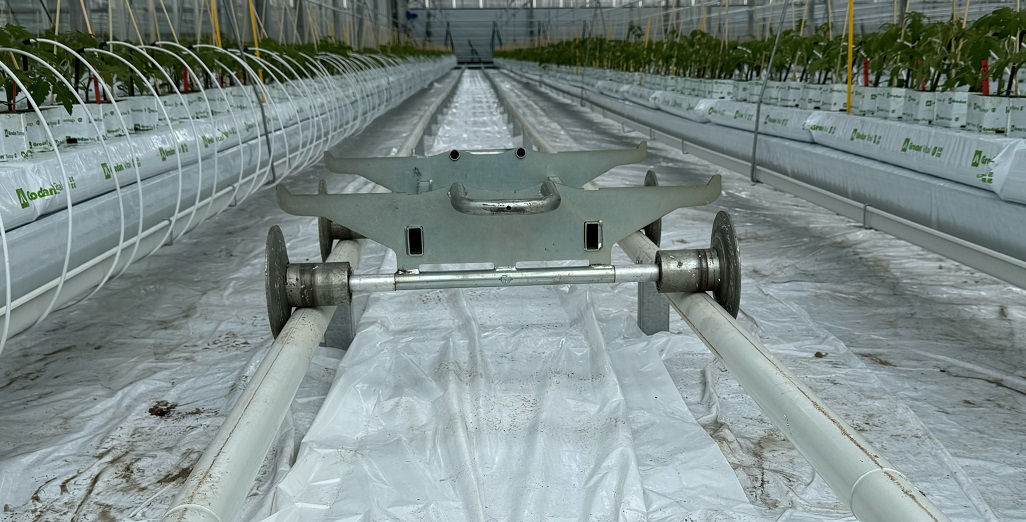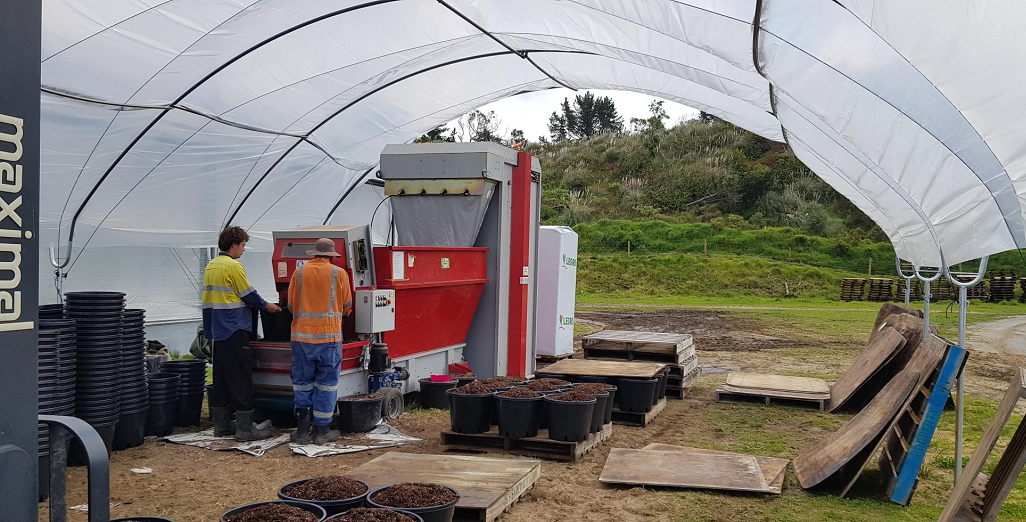Sign up here to subscribe to the Grower2grower Ezine. Every two weeks you will receive new articles, specific to the protected cropping industry, informing you of industry news and events straight to your inbox.
Jul 2019
Student Jeremy Aditya Prananto Presentation Captured my Attention (PCA)

Near-infrared (NIR) technology as a tool to monitor crop nutrient status in real-time
When you are focused on the job at hand, which for me was gathering technical growing information for articles during the PCA conference on the Gold Coast, I was fortunate to listen to student presentations that I had not realised were occurring. Early on the Monday morning seven university students were given a short three-minute time slot to present facts about research projects they were working on. All the presentations were fascinating and showcased the importance that Australian learning institutions are placing on horticulture, and not just outdoor but greenhouse horticulture.
The most eye-opening presentation of the morning was the work being carried out by University of Sydney student Jeremy Aditya Prananto. Jeremy’s presentation focused on his project ‘Near infrared spectroscopy for monitoring crop health conditions’. What does that mean? Jeremy is studying and researching how to calculate fertiliser requirements using crop nutrient status information combined with other factors to apply nutrients. To be proactive and ‘real time’ reactive to nutrient application.
I asked Jeremy if he would provide further information on his project as he only had a three-minute time allowance and I wanted to know more about his research. Jeremy has been kind enough to supply the following (fascinating) information:
What if in real time you could calculate your plants nutrient needs?
- What nutrients do they need?
- When do they need them?
- How much do they need?
"Instead of playing a guessing game, what if we can scan the plant to know its nutrient content. Wouldn’t it make managing nutrient for crops much easier?"
My research project focuses on the use of Near-Infrared (NIR) Technology as a tool to monitor crop nutrient status in real-time. The project is part of my Honours degree in Agriculture at the University of Sydney. It is funded through CSIRO aimed for the cotton industry; however, this technology is generic and ideal for horticulture crops grown in controlled conditions. I hope to solve nutrient application inefficiencies which is one of the main problems in agricultural production.
Efficient agricultural enterprises should optimise nutrient application based on plant needs. The key to an efficient crop nutrient management relies on the ability to manage a balance between the demand from the crop with the supply from the soil or other growing media. It is also important to consider that the demand from the crop changes throughout the season. To understand this dynamic demand, we need the ability to frequently monitor the crops nutrient status throughout the growing season.
Current methods for determining plant nutrient requirements are based on either soil or plant analysis which is not only expensive, but also time consuming. Analysis requires sampling of soil or plant materials, sending them to a laboratory for analysis and waiting for the results. The process could take two to three weeks. This has forced growers to only be reactive in how nutrients are managed which has led to inefficient nutrient management and reduction in yield potential. Therefore, a method that can reliably measure the crops nutrient status throughout the season is highly desirable.
My research aims to establish an NIR sensor which can estimate the nutrient content of a cotton leaf reliably in real-time. Knowing the crop’s nutrient status enables us to formulate precise fertiliser prescription which would allow growers to be more proactive in how they manage their nutrients.
A future development of this technology is to automate this NIR technology in a crop production system. The automation of this technology can be incorporated into the whole nutrient control process which would suit glasshouse and hydroponic systems. An NIR sensor can provide nutrient status of individual plants in real-time, and combined with information on microclimate and crop developmental age would allow an automated nutrient application system that can make micro-decisions on an individual plant.
The Project Structure:
The project can be divided into field data collection, data analysis and modelling, and application. I collected NIR reflectance spectra of the leaves in the field (Figure 1). Those leaves that were scanned are also sent to a laboratory for standard chemical analysis.


Figure 1. Scanning process of the leaf which can be done in the field (Top left) or in the glasshouse (Bottom). The top right picture represents the near-infrared (NIR) spectra of cotton leaves or NIR fingerprint.
Based on the data, I can build calibration functions which convert the plant NIR fingerprint (Figure 1) into nutrient concentrations. This process of calibration requires mathematical analysis of the data and the use of machine learning models. These calibrations will then be assessed on their accuracy and reliability in estimating the nutrient content of several macro and micronutrients.
Finally, I will test how this information can be used to provide fertiliser prescriptions. In this part of the project, the aim will be to establish a standard protocol for NIRS that can reproduce reliable and consistent results by taking account of different determining factors that affect NIR readings such as moisture, temperature, and leaf age.
< >Findings to Date:
I have already collected around 5000 cotton leaf reflectance spectra which was conducted for around one month on the Australian Cotton Research Institute in Narrabri. The preliminary results have shown great promise especially in estimating the total Nitrogen content in cotton leaves. The NIR sensors can also estimate macronutrients such as K, Ca, and Mg. The goal is to finish the project before October this year.
Hopefully by the end of October Jeremy will be able to give an update on his findings. It is certainly exciting to hear of projects like this and positive spin of this type of technology could some day give growers to utilise fertiliser more efficiently and effectively.
Each student was given three minutes to present their research projects.

Jeremy was first and had only three short minutes for his presentation. He did well!
Another of the presentations by Karly Groves from Central Queensland University, was examining key constraints to protected cropping systems in tropical and subtropical climates. Part of her research was understanding the causes of bent cucumbers which was costing growers an estimated Australian $ 2 million per year. This might not seem a large amount (and to be fair, I would suggest this figure is conservative) but this is a problem for growers not just in Australia but New Zealand from time to time as well. Basically, we have our own theories why a cucumber bends at certain development stages. It may be due to heat stress, water stress or pests such as thrips, but any work that is done to alert growers to potentially prevent cucumbers bending is research I would be very interested to look at!
I appreciate your comments. Please feel free to comment below or on the grower2grower Facebook page:
https://www.facebook.com/StefanGrower2grower/
Article Written by Stefan Vogrincic, Consultant, Grower2Grower
Article Edited by Marie Vogrincic, Editor, Grower2Grower
CLASSIFIED
Subscribe to our E-Zine
More
From This Category

Interesting tech for both covered and uncovered cropping
More daylight in the greenhouse for higher production

Minipack Quickshrink Ltd.

John van Santen joins the management of Metazet

Metazet Completes Greenhouse Installation in 2 Days for New R&D Greenhouse































